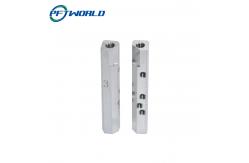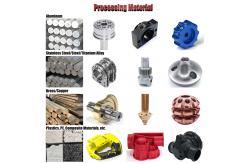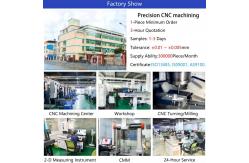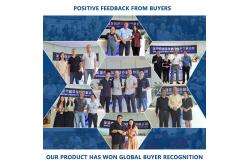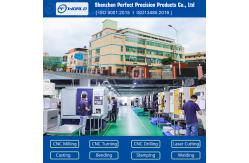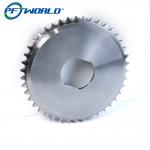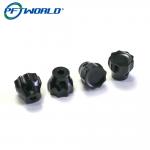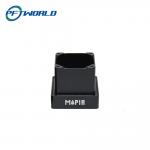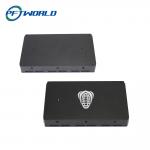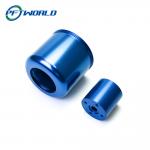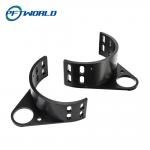|
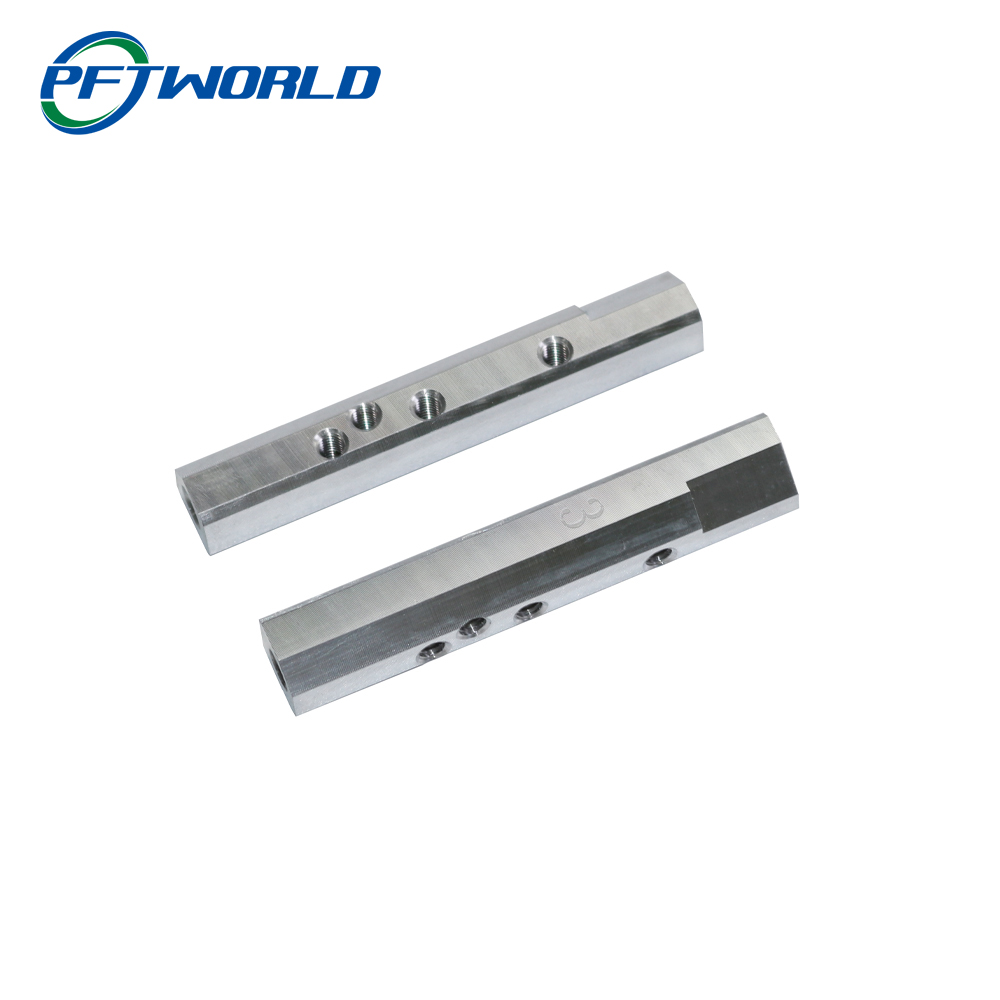 
What is CNC Machined Aluminum Laser Engraving? CNC machining refers to the use of computer-controlled machines to cut, shape, or mill material with high precision. Laser engraving, on the other hand, involves using a focused laser beam to etch or mark a surface. When these two technologies are combined, they offer exceptional capabilities for creating intricate and precise designs on aluminum surfaces. Aluminum, known for its light weight, strength, and resistance to corrosion, is a commonly used material in various industries, ranging from automotive to aerospace to electronics. By adding laser engraving to the CNC machining process, manufacturers can not only achieve the desired shape and size of the part but also integrate high-quality surface markings, logos, serial numbers, or even intricate patterns with laser precision. The Process of CNC Machined Aluminum Laser Engraving
The process of CNC machined aluminum laser engraving involves several steps that ensure high precision and consistent results. Here’s an overview of the typical process:
1.Design and CAD Modeling
Before the manufacturing process begins, the part design is created using CAD (Computer-Aided Design) software. This model outlines the exact dimensions, shapes, and features of the aluminum part. If laser engraving is part of the design, the CAD file will include the specifications for the engraving, such as logos, text, or other graphics.
2.CNC Machining
Once the design is finalized, the aluminum material is loaded into a CNC machine. The CNC machine will precisely cut, mill, or shape the aluminum according to the specifications provided by the CAD model. CNC machining ensures that each part is manufactured with tight tolerances and smooth finishes, ready for the laser engraving step.
3.Laser Engraving
After the aluminum part is machined to the desired shape and size, the next step is laser engraving. In this process, a high-powered laser is used to etch or mark the surface of the aluminum. The laser removes material from the surface, creating precise marks or graphics without physically altering the integrity of the part. Depending on the application, the engraving can range from shallow etching to deep engraving for enhanced visibility and durability.
4.Post-Processing and Finishing
Once the engraving is complete, the part may undergo additional finishing processes to ensure its appearance and functionality. Common post-processing steps include cleaning, deburring, or applying coatings for additional protection, such as anodizing. Anodizing, in particular, can provide a colored finish to the aluminum part, enhancing its aesthetic appearance and further improving its resistance to corrosion.
5.Inspection and Quality Control
The final step involves a thorough inspection to ensure the accuracy and quality of the CNC machined aluminum laser engraving. Precision measuring tools, such as CMM (Coordinate Measuring Machines), micrometers, and visual inspections, are used to verify that the dimensions and engraving are within specified tolerances. This ensures that each part meets the required standards before it is shipped to the customer.
Applications of CNC Machined Aluminum Laser Engraving 1.Aerospace Industry
In aerospace, precision and durability are paramount. CNC machined aluminum laser engraving is used to mark critical components with part numbers, serial numbers, and manufacturer logos. This helps ensure traceability and compliance with strict industry regulations.
2.Electronics Industry
Aluminum components used in electronics often require precise markings, logos, or part numbers. CNC machined aluminum laser engraving is widely used for labeling circuit boards, housings, and connectors, providing permanent, legible markings that can withstand exposure to heat, chemicals, and wear.
3.Automotive Industry
The automotive industry relies on CNC machined aluminum laser engraving for marking parts with logos, part numbers, and certification markings. The durability of laser engravings ensures that these marks remain legible throughout the life of the vehicle, even under harsh conditions.
4.Medical Devices
Medical device manufacturers require high precision and reliable part identification. Laser engraving on aluminum components allows for permanent, readable markings that comply with regulatory standards. The process is ideal for adding lot numbers, serial numbers, and manufacturer information to medical devices.
5.Consumer Goods and Branding
For consumer products, CNC machined aluminum laser engraving is often used for branding purposes. Companies can engrave their logos, brand names, or designs onto aluminum items such as electronics, kitchenware, and accessories, creating a high-end look while maintaining excellent durability.
Conclusion The combination of CNC machining and laser engraving provides an advanced, reliable, and cost-effective solution for creating high-quality, customized aluminum parts. Whether you're looking for precision machined components for the aerospace industry, durable markings for electronics, or intricate designs for consumer goods, CNC machined aluminum laser engraving offers an ideal solution. | | CNC Turning, CNC Milling, Laser Cutting, Bending, Spining, Wire Cutting, Stamping, Electric Discharge Machining (EDM), Injection Molding,3D Printing,Rapid Prototype,Moulds etc. | | | Aluminum: 2000 series, 6000 series, 7075, 5052, etc. | | Stainlesss steel: SUS303, SUS304, SS316, SS316L, 17-4PH, etc. | | Steel: 1214L/1215/1045/4140/SCM440/40CrMo, etc. | | Brass: 260, C360, H59, H60, H62, H63, H65, H68, H70, Bronze, Copper | | Titanium: Grade F1-F5 | | Plastic: Acetal/POM/PA/Nylon/PC/PMMA/PVC/PU/Acrylic/ABS/PTFE/PEEK etc. | | | Anodized, Bead Blasted, Silk Screen, PVD Plating, Zinc/Nickl/Chrome/Titanium Plating, Brushing, Painting, Powder Coated, Passivation, Electrophoresis, Electro Polishing, Knurl, Laser/Etch/Engrave etc. | | | ±0.002 ~ ±0.005mm | | | Min Ra 0.1~3.2 | | CERTIFICATE | ISO9001:2015,AS9100D,ISO13485:2016,ISO45001:2018,IATF16949:2016,ISO14001:2015,ROSH,CE etc. | 




FAQ 1. Are you a manufacturer or a trading company? We are a factory located in Shenzhen, China, with 20 years of rich experience,
covering 6000 square meters. Complete facilities, including 3D quality inspection equipment, ERP system and 40 machines. If necessary, we can provide you with material certificates, sample quality inspection and other reports. 2. How to get a quote?
Detailed drawings (PDF/STEP/IGS/DWG...), including quality, delivery date, materials, quality, quantity, surface treatment and other information. 3. Can I get a quotation without drawings? Can your engineering team draw for my creativity? Of course, we are also glad to receive your samples, pictures or detailed size drafts for accurate quotation. 4. Can you provide samples before mass production? Of course, the sample fee is necessary. If possible, it will be returned during mass production. 5. What is the delivery date? Generally, the sample lasts for 1-2 weeks and the batch production lasts for 3-4 weeks. 6. How do you control quality? (1) Material Inspection - Check material surfaces and approximate dimensions. (2) First inspection of production - ensure critical dimensions in mass production. (3) Sampling inspection - check the quality before delivery to the warehouse. (4) Preshipment inspection - 100% inspection by QC assistant before shipment. 7. After sales service team If you have any problems after receiving the product, you can provide feedback through voice call, video conference, email, etc. within one month. Our team will provide you with solutions within a week. |

